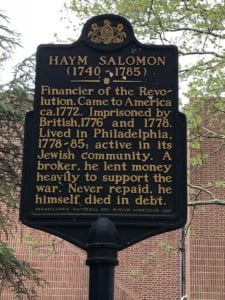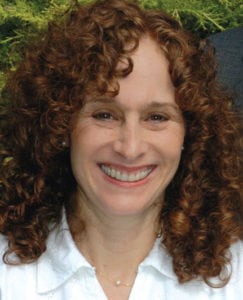“You shall proclaim liberty throughout the land for all its inhabitants.”
Leviticus 25:10
When the first 23 Jews reached the shores of New Amsterdam in 1654, sailing from Recife, Brazil, to escape the long arm of the Spanish Inquisition, they were looking for religious freedom. They found conditions far from ideal, but a far cry better than what they had left behind.
This group of 23 founded the first synagogue in what would later become the United States of America, Congregation Shearith Israel — the only Jewish congregation in New York City until 1825.
The first six congregations that were established in North America were all worshipped according to the Sephardic rites. One of these six was Congregation Mikveh Israel, founded in 1740 in Philadelphia.
A few weeks ago, I visited this synagogue with my confirmation class. Not only did we have a one-on-one session with the rabbi of Mikveh Israel, we also saw the synagogue’s magnificent ark and the 19 Torah scrolls it houses.
We experienced a piece of Jewish history.
Haym Salomon, a Polish-born Jew, was an active member of Mikveh Israel. In fact, a historical marker stands in front of the synagogue, reminding visitors of Salomon’s prominent role in the financing of the American Revolution Without Salomon’s help, we most likely would be speaking with British accents today. His financial contribution, which left him impoverished at the end of his life, helped to turn the tide of the war.

A historic marker dedicated to Jewish American Revolution patriot Haym Solomon stands outside Mikveh Israel synagogue in Philadelphia (photo by Rabbi Beth Jacowitz Chottiner)
Rebecca Gratz, another Mikveh Israel member, founded the first Sunday school for Jewish children in Philadelphia in 1849 – the Hebrew Education Society. Later, her brother would establish Gratz College, which began as a Hebrew teachers college and still exists today, as a center of Jewish undergraduate and graduate study.
The roles Jews played in Philadelphia before, during and after the founding of the nation, coupled with the influence of Jews in American society today, explain the chosen location for the National Museum of American Jewish History. Less than a mile mile from Independence Hall and a mere 456 feet from The Liberty Bell, the museum solidifies the presence and importance of the American Jewish community. No wonder the bell’s inscription, which we read a few weeks ago in our synagogues, comes directly from Leviticus (see text above).
The values of the Torah were known to our Founding Fathers. They served as guiding principles, as they created our government. We Jews did our part to insure religious freedom would be part of our country’s fabric.
In 1788, the Constitution outlawed religious tests for public office, making it possible for the election of Jews to public office, but in 1790, nine of the 13 states still required public officials to be Christian. Through persistence and perseverance, this changed, and the First Amendment of the Bill of Rights, ratified in 1791, granted freedom of religion to all citizens.
Being Jewish in America is not always easy. We are not always valued by others; neither are we always seen as equals in the eyes of some. However, we have the rule and protection of law on our side (something our ancestors did not have in other lands). We have the value of liberty inscribed in our Torah and on our Liberty Bell; we know that Jews, such as Haym Salomon were indispensable in birthing the country; and we know that our first president, George Washington, valued liberty and equality, as he wrote in 1790, “Happily the Government of the United States …gives to bigotry no sanction, to persecution no assistance.”
(Rabbi Beth Jacowitz Chottiner is the spiritual leader of Temple Shalom.)



